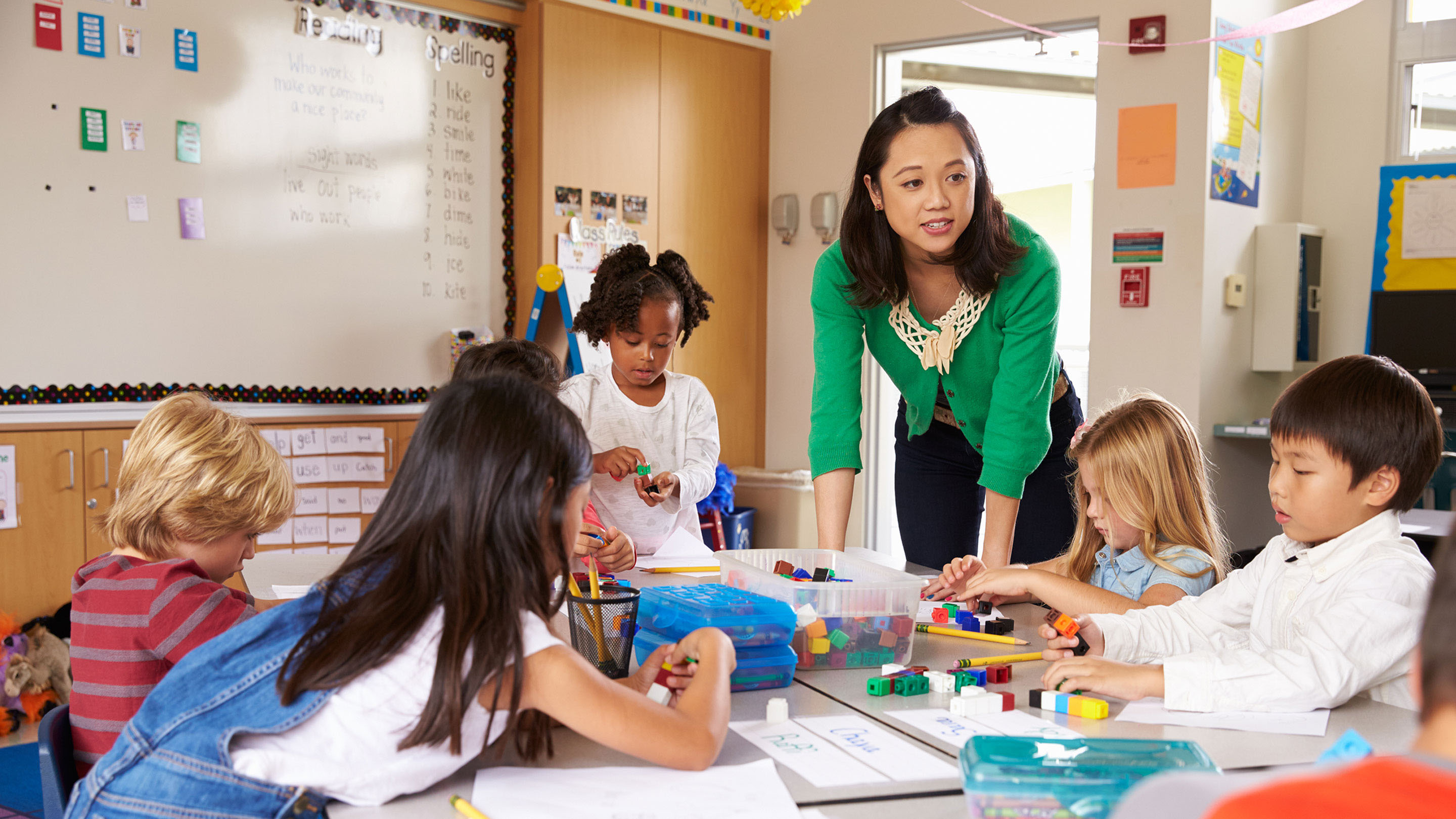A Comprehensive Overview to the Different Knowing Techniques in Main Scientific Research Guideline
The exploration of varied understanding methods in primary science direction offers a chance for teachers to enhance trainee interaction and comprehension dramatically. By checking out hands-on knowing techniques, inquiry-based methods, and collaborative techniques, we can identify reliable techniques that cater to numerous discovering designs.

Hands-On Understanding Methods
Hands-on discovering techniques play a crucial function in main science guideline, engaging trainees in energetic expedition and experimentation. These methods permit learners to engage directly with products and phenomena, promoting a much deeper understanding of scientific concepts. By utilizing manipulatives, models, and real-life experiments, teachers develop a setting where pupils can observe, hypothesize, and test their concepts.
Such methods not just improve comprehension but also grow crucial reasoning and problem-solving skills. When pupils take part in activities like building easy machines, planting seeds, or performing chemical reactions, they are urged to ask inquiries and seek solutions with their own observations. This experiential approach aids to demystify complicated clinical concepts, making them much more easily accessible and relatable.
Furthermore, hands-on understanding advertises partnership amongst peers, as trainees commonly operate in teams to conduct experiments or share findings. This teamwork not just enriches their understanding experience however additionally develops vital social abilities. Inevitably, incorporating hands-on strategies in key scientific research instruction promotes a lifelong love of learning and inquisitiveness concerning the natural globe, laying a solid foundation for future scholastic quests in scientific research and past.
Inquiry-Based Learning
Inquiry-based learning is a training strategy that urges students to ask inquiries, examine sensations, and construct their own understanding of clinical ideas. This technique moves the focus from typical teacher-led direction to a more student-centered experience, where students take the campaign in their academic trip. By fostering curiosity, inquiry-based understanding advertises deeper engagement with the material, enabling trainees to check out topics in a significant context.
In technique, this approach often involves hands-on experiments, monitorings, and critical thinking tasks that align closely with the clinical method. Trainees are motivated to formulate hypotheses, style examinations, and evaluate data, which grows essential skills such as logical and analytical reasoning. The role of the educator in this structure is to facilitate expedition, directing trainees with the query process while urging independent idea and cooperation.
Furthermore, inquiry-based learning supports a feeling of ownership over the discovering process, encouraging pupils to go after knowledge proactively. This method not only boosts understanding of scientific principles yet likewise promotes a long-lasting love for discovering, furnishing trainees with the abilities essential to browse a progressively intricate globe.
Collaborative Understanding Approaches
Collective learning approaches empower students to involve in meaningful interactions with peers, cultivating a shared obligation for their educational end results. In main science guideline, these techniques motivate learners to function together to discover clinical principles, resolve problems, and conduct experiments (primary science tuition Singapore). By joining group tasks, students can utilize varied point of views, enabling for richer understanding and retention of scientific expertise
One key aspect of joint understanding is the focus on communication skills. Pupils should verbalize their ideas, pay see this website attention actively to others, and bargain ideas, all of which are essential expertises in both real-world and scholastic contexts. This social interaction not just improves their understanding of clinical principles yet additionally advertises team effort and conflict resolution skills.
In addition, joint knowing frequently brings about raised inspiration and interaction. They are a lot more most likely to take ownership of their understanding trip when students see the worth of their payments within a group. Teachers can facilitate this procedure by making structured group jobs that straighten with educational program goals while providing support on effective partnership strategies. Overall, including joint discovering approaches in key science direction cultivates a dynamic discovering environment that prepares pupils for future scholastic and social obstacles.
Technology Assimilation in Scientific Research
The assimilation of modern technology in primary scientific research instruction enhances learning experiences by supplying innovative devices and sources that sustain different training approaches, consisting of collective knowing - primary science tuition Singapore. The usage of digital platforms, simulations, and interactive applications permits students to engage deeply with scientific ideas, assisting in a more hands-on strategy to knowing
Digital labs, for example, enable students to perform experiments safely and efficiently, advertising inquiry-based knowing. These devices can mimic real-world clinical situations, enabling students to picture intricate processes that would certainly be tough to duplicate in a typical class setting. Furthermore, innovation cultivates interaction and partnership amongst students, as they can share searchings for and function with each other on projects with on-line platforms.
In addition, multimedia discussions and educational videos can improve lessons by catering to diverse knowing designs, making abstract concepts more easily accessible. Information analysis devices likewise encourage pupils to accumulate and translate clinical data, reinforcing essential thinking skills. Overall, the calculated unification of modern technology in main scientific research direction not only improves engagement but also prepares trainees for a technically site link advanced culture, furnishing them with vital skills for future scientific ventures.
Separated Guideline Techniques
Set apart direction techniques are important for dealing with the diverse needs of students in key science education and learning. These techniques allow educators to customize their training techniques to accommodate varying capabilities, rate of interests, and discovering designs within the class. By using separated instruction, instructors can develop a comprehensive environment that promotes interaction and boosts understanding of scientific ideas.
One reliable approach is to make use of flexible grouping, which allows trainees to collaborate with peers at similar ability levels or with differing point of views. This approach motivates peer learning and promotes critical thinking. Furthermore, using selections in assignments can encourage students, enabling them to pick projects that reverberate with their why not check here interests while still satisfying curricular objectives.
Moreover, integrating tiered jobs is another valuable technique. By designing tasks with differing levels of intricacy, instructors can guarantee that all trainees are suitably challenged, no matter of their effectiveness. Making use of developmental analyses to determine comprehending further allows teachers to change their instructional techniques dynamically, making sure that each student receives the assistance they require.
Ultimately, carrying out separated direction techniques in key science education not just enhances trainee learning results but likewise cultivates an enthusiasm for scientific research, preparing pupils for future scholastic pursuits.

Final Thought
In recap, reliable primary science direction requires a multifaceted approach that includes hands-on learning, inquiry-based techniques, and collaborative methods. The assimilation of innovation and differentiated direction further caters to varied knowing designs, fostering an atmosphere favorable to expedition and essential reasoning.
The exploration of varied discovering approaches in main science direction offers a chance for instructors to enhance student involvement and understanding considerably.Hands-on discovering techniques play a critical function in primary scientific research guideline, engaging trainees in active expedition and experimentation.Inquiry-based learning is an instructional technique that encourages trainees to ask questions, check out phenomena, and create their own understanding of scientific principles.Collaborative knowing approaches encourage students to involve in purposeful interactions with peers, promoting a shared duty for their instructional outcomes. Generally, integrating collaborative understanding techniques in main scientific research instruction grows a vibrant understanding atmosphere that prepares students for future academic and social difficulties.